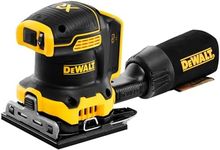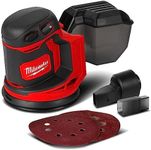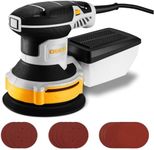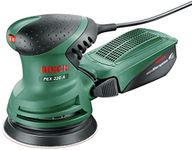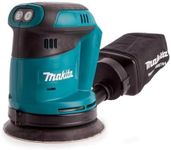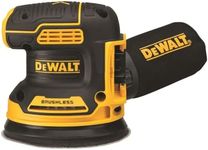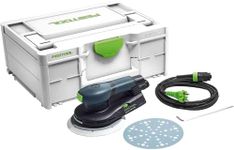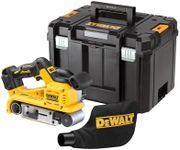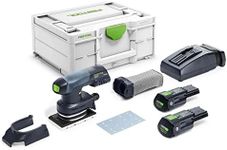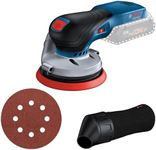Buying Guide for the Best Hand Sanders
When choosing a hand sander, it's important to consider the type of projects you'll be working on, the materials you'll be sanding, and your own comfort and skill level. Hand sanders come in various types, each suited for different tasks, so understanding the key specifications will help you select the best tool for your needs. Consider the size and weight of the sander, as well as the ease of use and maintenance. Additionally, think about the power source and the type of sandpaper it uses, as these factors can affect the sander's performance and your overall experience.Type of SanderThe type of sander is crucial because it determines the kind of work you can do. Common types include orbital sanders, random orbital sanders, belt sanders, and detail sanders. Orbital sanders are great for fine sanding and finishing, while random orbital sanders offer more versatility and can handle both rough and fine sanding. Belt sanders are powerful and best for removing large amounts of material quickly, making them ideal for larger projects. Detail sanders are perfect for small, intricate areas. Choose based on the type of projects you plan to undertake.
Power SourceHand sanders can be powered by electricity or batteries. Electric sanders are typically more powerful and suitable for heavy-duty tasks, but they require a power outlet, which can limit mobility. Cordless sanders offer more flexibility and are easier to maneuver, especially in tight spaces, but they may not have the same power and can run out of battery during longer tasks. Consider where you'll be working and whether you need the freedom of movement that a cordless sander provides.
Speed ControlSpeed control allows you to adjust the sander's speed to match the task at hand. Variable speed sanders let you slow down for delicate work or speed up for more aggressive sanding. This feature is important if you plan to work on a variety of materials or need precision in your projects. If you're working on a single type of material or task, a single-speed sander might suffice. Consider the range of projects you plan to tackle when deciding on the importance of speed control.
Dust CollectionDust collection is an important feature for keeping your workspace clean and reducing airborne particles. Some sanders come with built-in dust bags or can be connected to a vacuum system. Effective dust collection not only keeps your work area tidy but also improves visibility and reduces health risks associated with dust inhalation. If you work indoors or in a small space, a sander with a good dust collection system is essential.
ErgonomicsErgonomics refers to how comfortable and easy the sander is to use. A well-designed sander will have a comfortable grip, be well-balanced, and not too heavy, reducing fatigue during extended use. Consider the handle design and the overall weight of the sander, especially if you plan to use it for long periods. A sander that feels good in your hand will make your work more enjoyable and efficient.
Sandpaper CompatibilityDifferent sanders use different types and sizes of sandpaper. Some sanders require specific sandpaper shapes or attachment methods, such as hook-and-loop or adhesive. It's important to know what type of sandpaper your sander uses, as this can affect the ease of changing paper and the cost of replacements. Consider the availability and variety of sandpaper for the sander you choose, especially if you plan to work on diverse projects.
